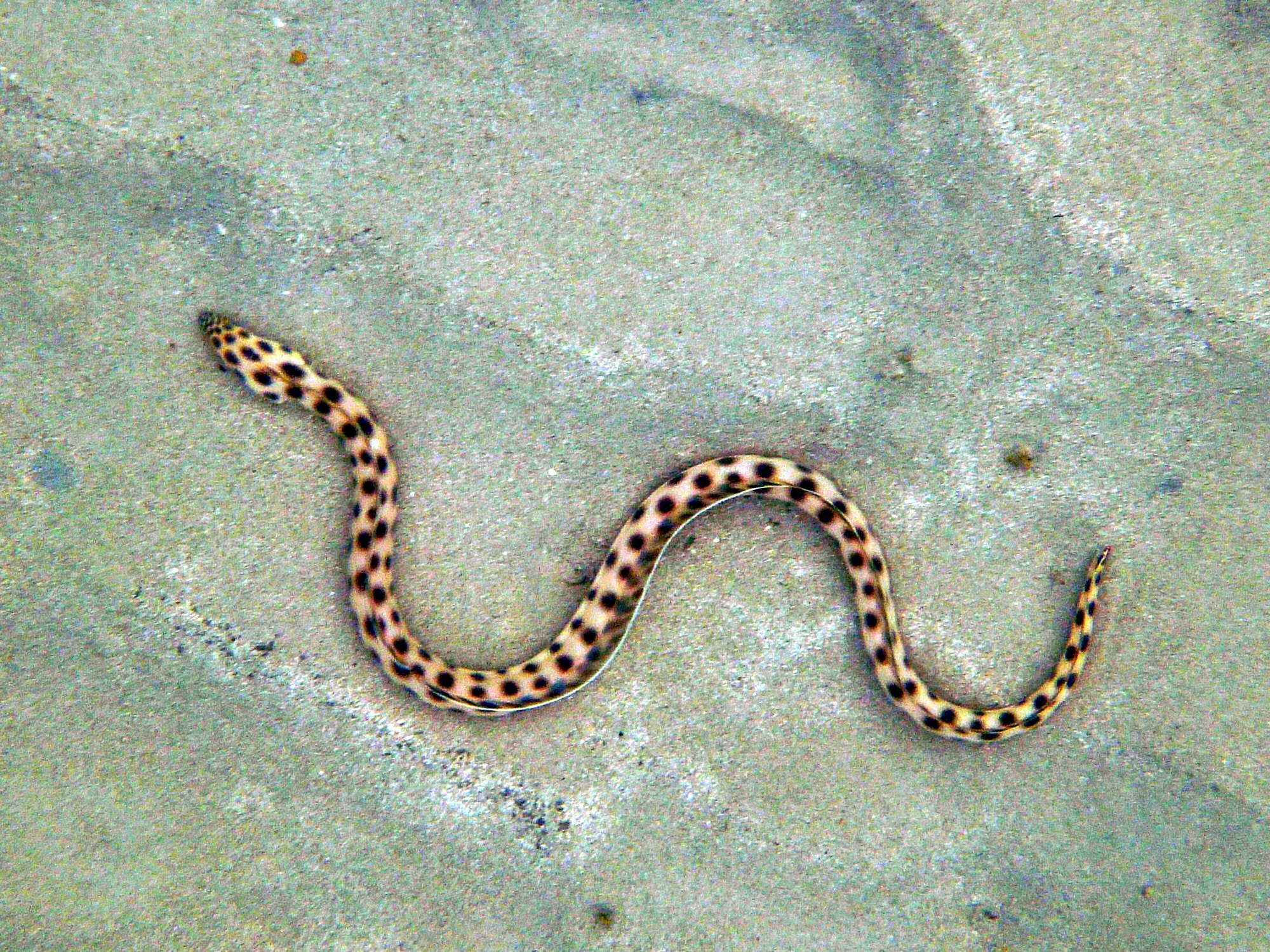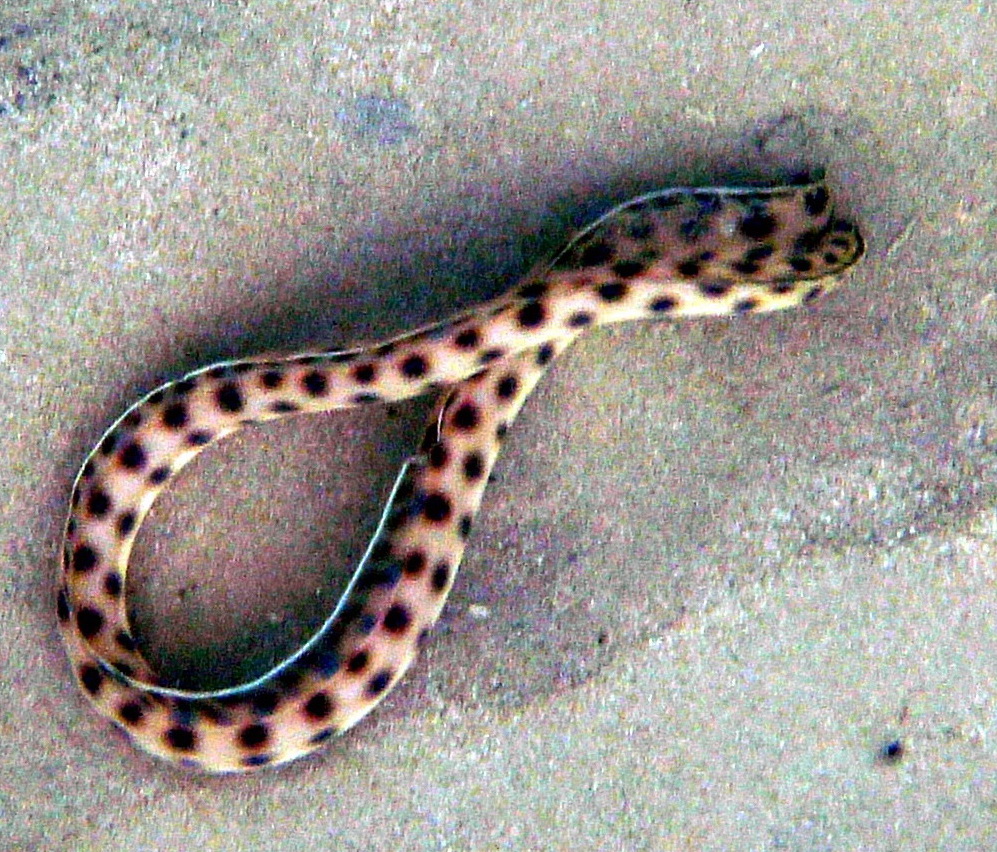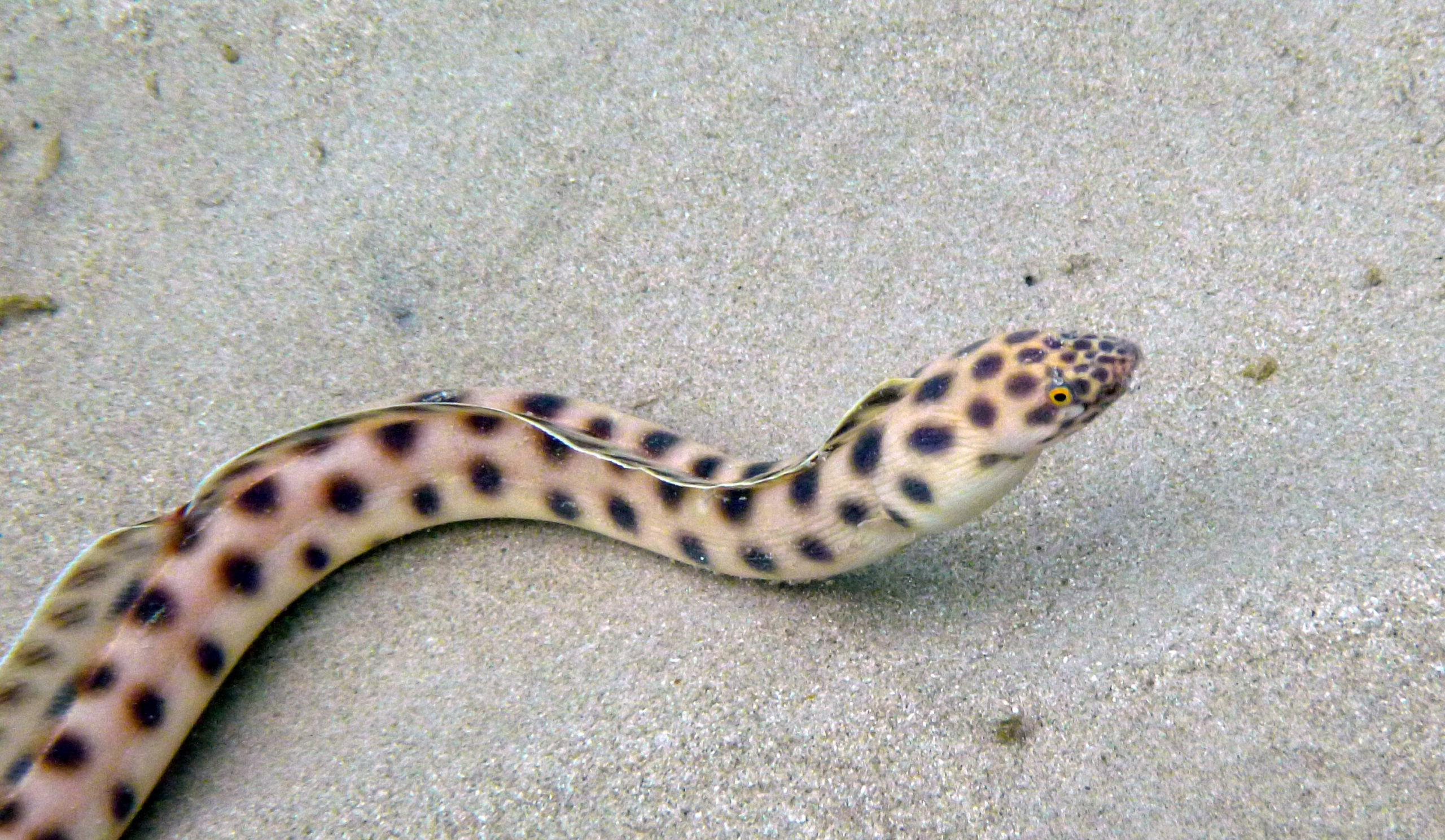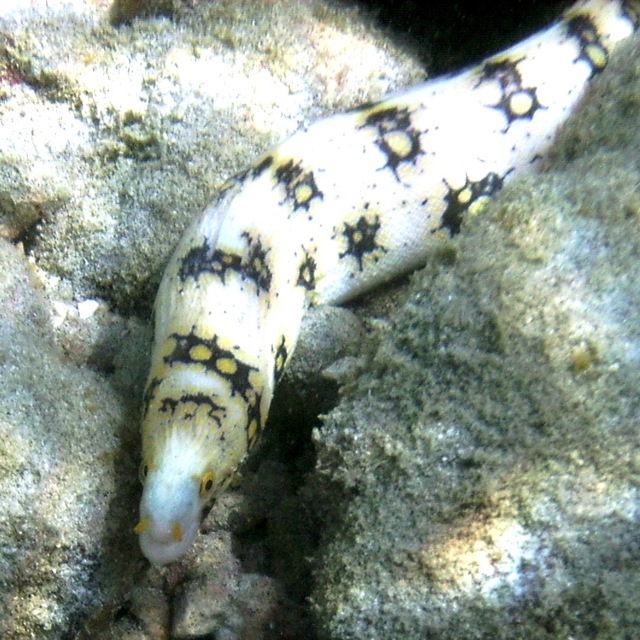Published in the Ocean Watch column, Honolulu Star-Advertiser © Susan Scott
August 20, 2012
Hawaii’s favorite birds are back. My first email regarding the return of a Pacific golden plover came July 30 in an unsigned note: “I live in Mililani Mauka and came home to see my favorite Kolea in my back yard this afternoon! :)” The next day my kolea was home, too, prancing over her grassy territory as if it was no big deal that she just flew 3,000 miles nonstop.
 Photo by Susan Scott
Photo by Susan Scott
Snake Eel
Since then I’ve received several readers’ letters about these migratory shorebirds, reporting where they spotted a bird and asking whether this is an unusually early return.
No. A few plovers make it back to Hawaii in late July and early August. The earliest are either experienced parents that mated promptly, raised their chicks and took off, or they’re individuals that failed to reproduce. If rain or snowmelt floods your nest, a caribou tramples your eggs or a fox eats your chicks — well, might as well fly back to Hawaii and try again next year.
A third possibility is that the bird never left. Sick or underweight kolea skip a year and spend the summer in Hawaii.
Of the successful plover parents in Alaska, it’s the females that return first. Males follow; fledglings get here last. All fly to Hawaii without rest in about four days.
Due to wind conditions, the birds’ average speed is a bit faster on their northbound flight. Kolea make their Alaska destination from here in three days.
Two other emails arrived from readers last week wondering whether they had disproved biologists’ assertion that Hawaii hosts no sea snakes except, rarely, the pelagic yellow-bellied sea snake — black on back, yellow below. Both readers sent photos. One was a snowflake moray eel, the other a magnificent snake eel.

Photo by Susan Scott
Snake Eel
I shared with the snake eel photographer my own photo of a snake eel in an amusing position. Recently in Mexico, Craig and I were watching the eel glide along the sandy floor when it sensed a potential meal and wiggled its head in the sand. When it couldn’t reach its prey, the eel cracked us up by sticking its tail in the same hole, head and tail digging side by side.
Such tail digging is typical of some snake eel species, enabling them to wriggle backward, and hide, in sand.
We couldn’t see whether the eel got its prize, but after such creative quarrying, we hoped it did.
 Photo by Susan Scott
Photo by Susan Scott
Snake Eel
Of the world’s approximately 300 species of snake eels, fish that mimic sea snakes, Hawaii hosts 17. We also host 42 species of moray eels and three conger eels. That’s a lot of long, slithery fish in our island waters.
No one has yet photographed a (non-yellow-bellied) sea snake in Hawaii, but keep those cameras ready. Marine animals get around.
I enjoy all comments and questions.
Thanks for writing.
 Snowflake eel, Hanuama Bay, Oahu, Hawaii, courtesy Scott Davis
Snowflake eel, Hanuama Bay, Oahu, Hawaii, courtesy Scott Davis